Ropes and winches: flying the flag high
17 May 2021
A look at the rope and winches sector after 12 months of unprecedented disruption from coronavirus. Christian Shelton reports
“Order intakes are not as bad as you might expect,” states Christian Schorr-Golsong, director product marketing at Kirkel, Germany-based rope manufacturer Casar, part of the WireCo portfolio. “Of course, last year we had a drop between March and June when everybody was affected in a strong way by Corona. In Germany production stopped and factories closed but by the summer numbers picked up and since then we have had a steady stream of business.”
According to Schorr-Golsong this steady steam is primarily coming from the aftermarket and dealer businesses. “Not really from the OEMs,” he says. “Demand from them is either stable or reduced.”
Little movement from the OEMs is to be expected following the events of 2020. “We have seen it to some extent already,” underscores Chris Sleight, managing director of Off-Highway Research – a management consultancy specialising in the research and analysis of international construction markets. “With the industry heading into a weaker and more uncertain economic environment compared to the late 2010s, industry job losses and factory closures are possible.” For the full interview with Chris Sleight click here.
Prior to the Covid-19 outbreak, Off-Highway Research (OHR) expected the global construction equipment market to have a soft landing after the record highs of 2018 and 2019. Instead of the previously expected 5 percent downturn in global construction equipment sales, OHR expects the market to be down 11 percent.
“That is not a bad result given the shock which Covid-19 has had on the global economy,” qualifies Sleight. “Indeed, in volume terms, 2020 would be one of the five best years on record for global equipment sales. However, it is important to dig beneath the headline figure.
Chinese upswing
“The important factor in 2020 has been China. As the country emerged from its lockdown in April, the government launched various stimulus measures. Now, instead of the previously forecast 9 percent downturn in construction equipment sales in 2020, the Chinese market will be up at least 15 percent. It will be comfortably the largest construction equipment market in the world in 2020, accounting for well over a third of global demand. A market that large with such a big upswing of course skews the global picture.”
“Crane companies in China are indeed ordering large amounts of rope at the moment,” affirms Schorr-Golsong. “They are back to normal there and looking to catch up. The feedback I received from Bauma Shanghai 2020 was that, despite the lack of international visitors, there was a lot of business going on amongst the Chinese.”
“Construction is fortunate that it can continue reasonably uninterrupted with appropriate Covid precautions in place,” points out Sleight. “Certainly it has seen an impact form the Covid pandemic, but it seems to have been one of the most mildly affected industries and one of the first to get back to some sort of normal working.”
Casar, for one, is looking forward. Although Covid interrupted some new product testing procedures in 2020 the company already has its sights set on 2022. “We expect there to be some continued stagnation of the market this year and then things will really pick up in 2022,” says Schorr-Golsong. “Although this is still over a year away, as we all know, time flies… we are now focusing on finishing things this year so that we are ready in time for Bauma 2022.”
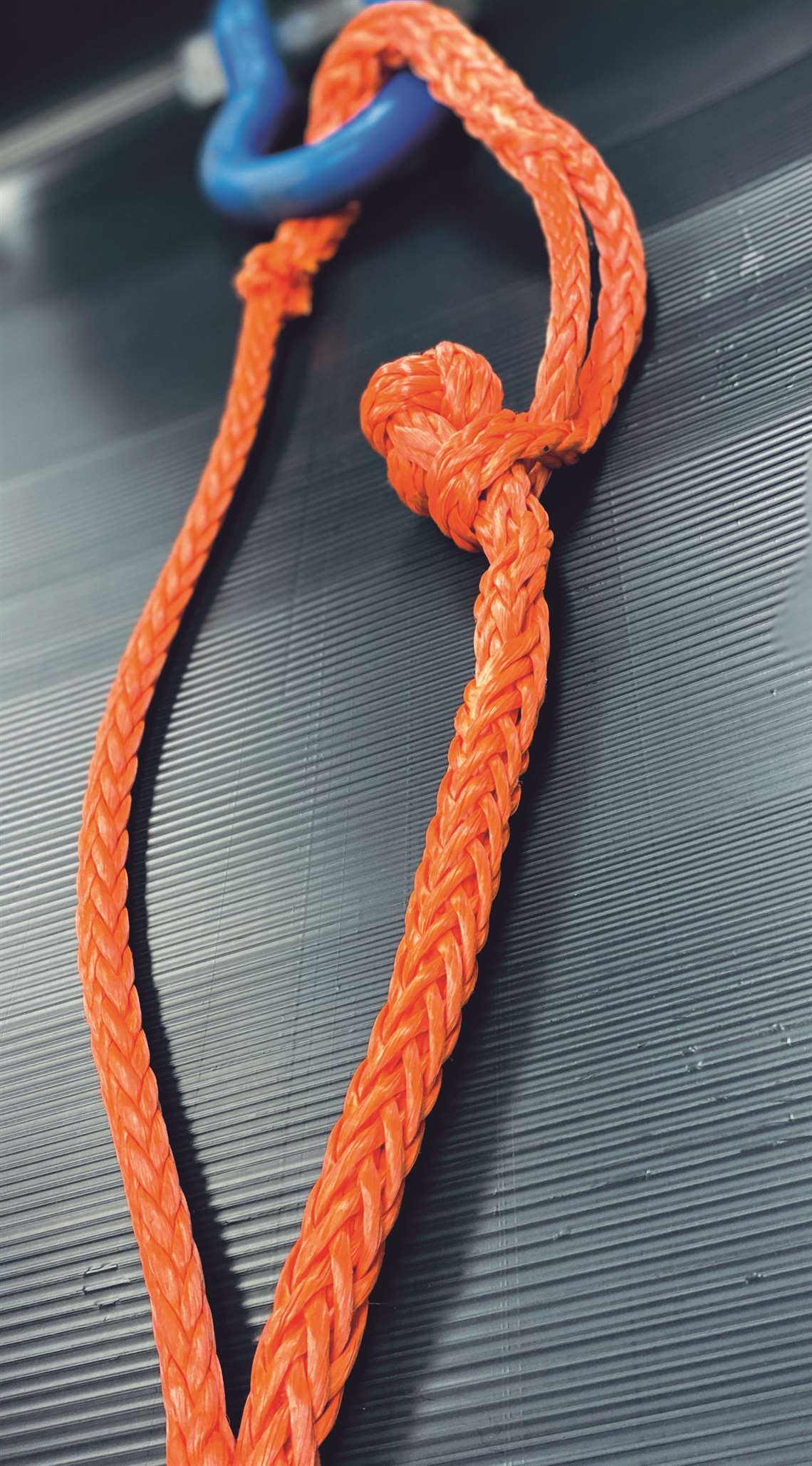 The X-Tremaloop from Phillystran
The X-Tremaloop from Phillystran
Other companies are already launching new products or working on prestigious projects. Another WireCo brand, Phillystran, for example, announced the X-Tremaloop fibre rope softline link in December 2020. According to Phillystran, X-Tremaloop connection is the first synthetic rope where the soft eyes can open and close. It uses a simple knot and eye connection enabling single hand use. The opening and closing of connection hardware or even the hardware itself can be eliminated when using the X-Tremaloop, says Phillystran.
Applications include towing lines for mining trucks and equipment pulling lines. A video of the system can be seen by clicking here.
Winch drum manufacturer Lebus International Engineers has carried out a high-profile job as one of its drums is being used by lift solutions specialist Garaventa to replace the winch on the Peak Tram funicular railway in Hong Kong.
The railway is being upgraded with a HK$684 million investment by Peak Tramways Company. New, longer tram cars will increase passenger capacity. This requires new lifting gear to be put in, with new control systems, new track rails and even heavier duty wire rope.
The latest upgrade has special significance for one company involved: Lebus International Engineers from Germany which, 32 years ago, supplied the spooling system that’s now being replaced. “I love this project as in 1989 I installed the actual drum in service,” says Cris Seidenather, managing director of Lebus. “It took me six hard weeks and was an unforgettable experience.”
Lebus has now supplied its special grooved drums for the new winches, which are waiting ready to be installed, hopefully by April 2021 if it’s ‘Covid-safe’ to do so.
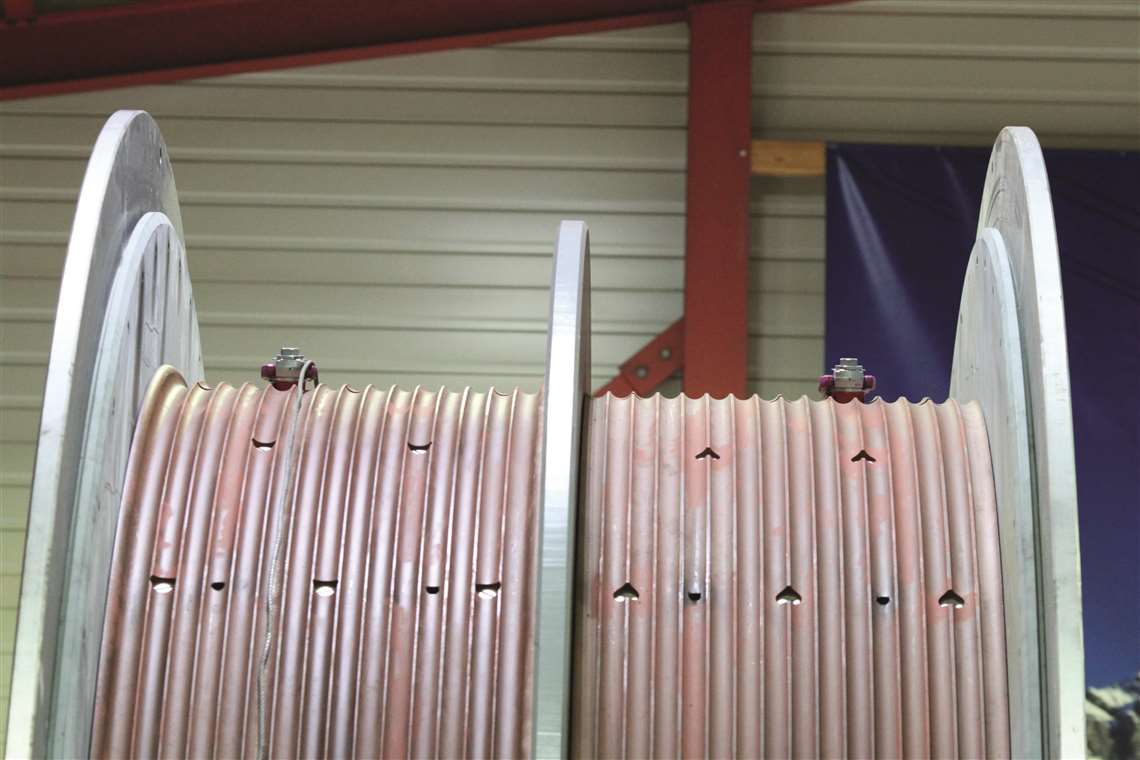 The new Lebus drum awaiting installation on the Peak Tram funicular railway in Hong Kong
The new Lebus drum awaiting installation on the Peak Tram funicular railway in Hong Kong
The double reversible funicular system comprises two rope drums side by side. They rotate in unison but one has the rope spooling from above and the other from below. This means that as one drum pays out rope to lower the downward tram toward the bottom, the other is pulling in the upward tram towards the top. They rotate as one, reaching a maximum speed of six metres per second, but with equal and opposite effect.
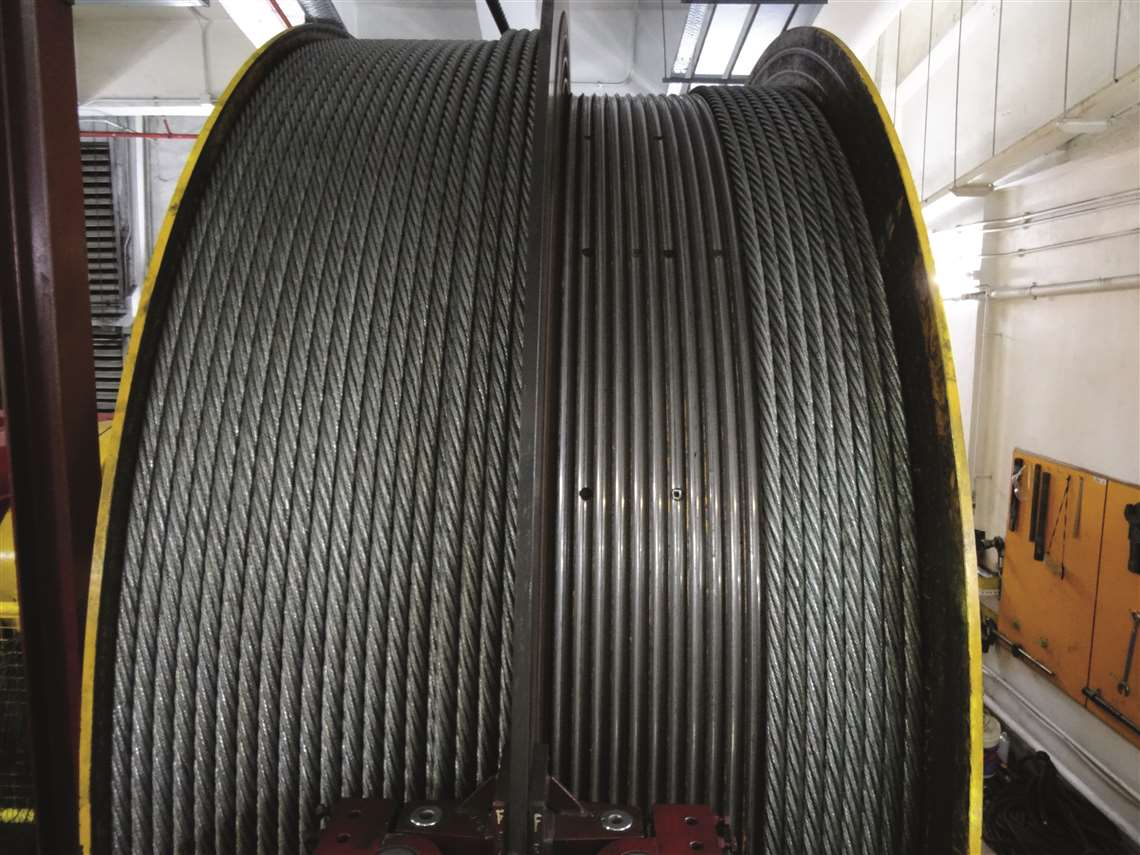 Lebus’s old drum on the Peak Tram funicular railway installed in 1989
Lebus’s old drum on the Peak Tram funicular railway installed in 1989
The drums are tall and (relatively) narrow, with a pitch circle diameter (PCD) of more than five metres but a width of not much more than 800 mm between the flanges. The 1,365 metres of Fatzer 50.5 mm wire rope is spooled in six layers when fully loaded, with the geometry of the Lebus drum groove pattern ensuring the rope spools without catching, snagging or crushing the lower layers against the drum face.
The compacted, smooth surface of Fatzer’s 8x25 Compacta wire rope results in a greater metallic cross-section with the same diameter and also ensures an improved friction connection with drive elements, says Lebus. This, it claims, reduces wear on rollers, clamps and sheaves, while also increasing fatigue life considerably.
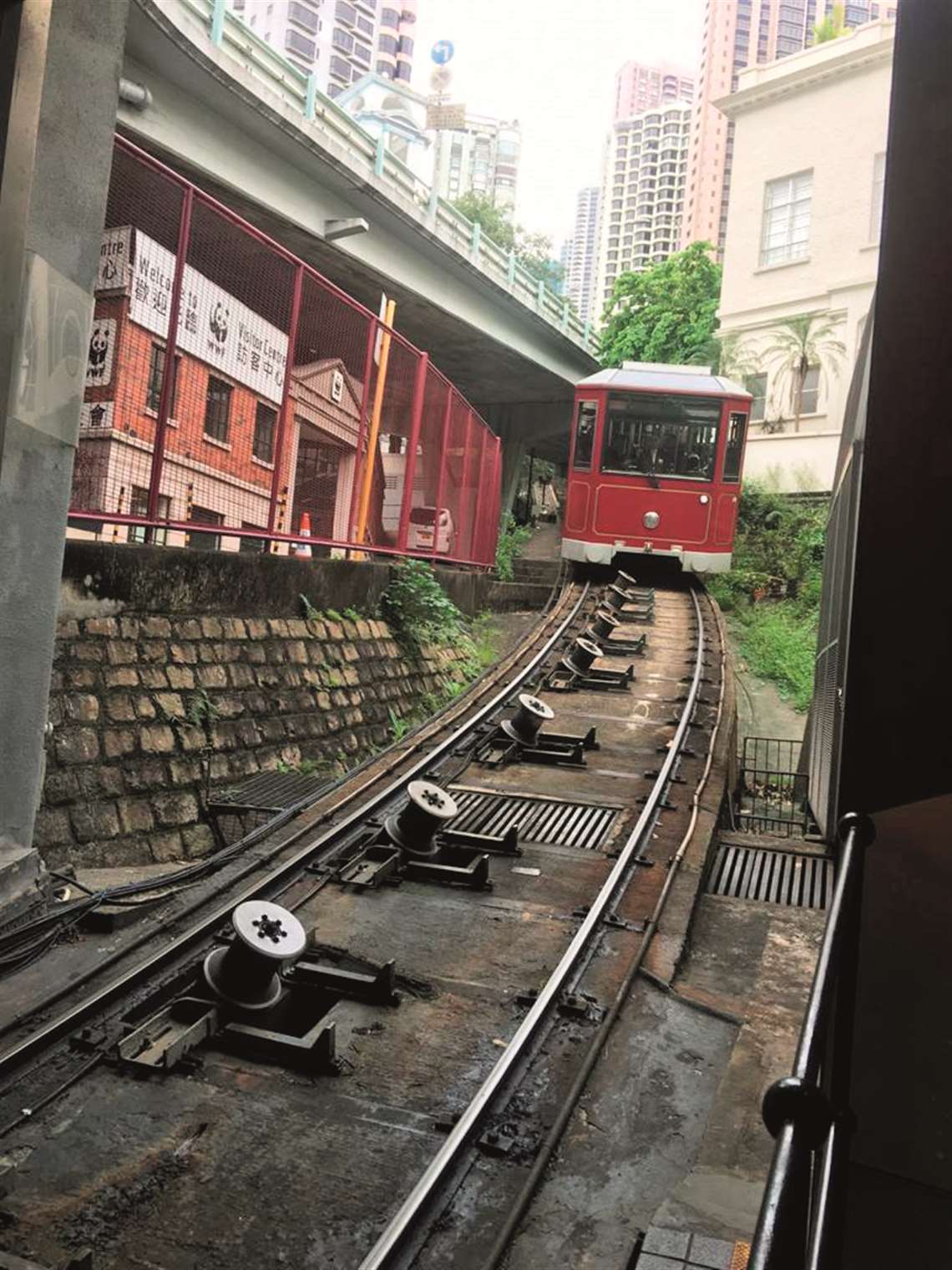 Lebus is providing a new winch system for the historic Peak Tram funicular railway in Hong Kong
Lebus is providing a new winch system for the historic Peak Tram funicular railway in Hong Kong
The drums are so narrow because there is not much space in the machine house. This compromises being able to achieve the optimum fleet angle for smooth rope spooling. To address this, sheaves are rigged behind the winch. The ropes do not go directly from winch to tram cars; they first go backwards, round their respective sheave, and then return at a slight angle that optimises spooling.
In 1989 Lebus supplied the grooving system in the form of a pair of giant steel shells for each drum, to be bolted on to the face of the drums in situ, inside the machine house up the mountain. But even broken down in this way, these remain large components, presenting logistical challenges. So this time the drum sleeves have been fabricated in three parts for easier handling.
Trailer blazer
Derby, UK-based Rotrex Group, a worldwide winch hire, sales and support specialist, has invested almost £250,000 (US$ 346,000)developing a 60 tonne capacity trailer winch. Rotrex has called its new winch ‘Magni’, after the Norse god of strength, and believes it will be key to its expansion into new markets.
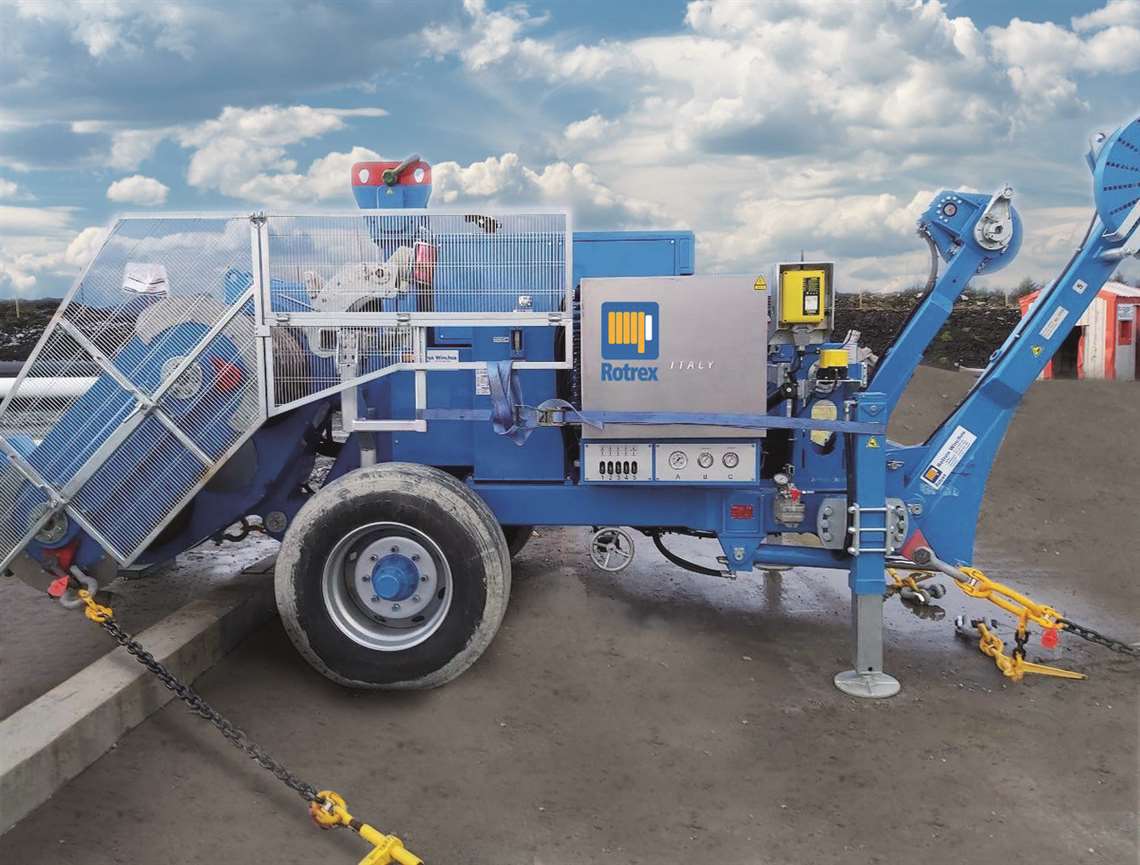 Rotrex’s Magni trailer winch
Rotrex’s Magni trailer winch
According to Rotrex, Magni is the largest capacity trailer winch available in Europe. The company says it has a versatile design and can be used for a range of applications such as long cable pulls and supporting major tunnelling projects.
The winch was manufactured in Italy to Rotrex’s specifications and includes remote control and Wi-Fi technologies. Rotrex said it is confident Magni will be in demand in the UK and across Europe. The company has already secured a large water utilities contract in Norway, starting this year, where Magni will be used to help re-line pipes.
The Magni also has a large rope storage facility, Rotrex added, allowing pulls of up to 2,400 metres.
Fibre provider
Over the last 12 months Austrian rope manufacturer Teufelberger has supplied crane manufacturer Liebherr with around 30 units of its Solite fibre ropes. The rope is being used on Liebherr’s 240 EC-B 10 Fibre and 240, 278 and 370 EC-B 12 Fibre tower cranes. Teufelberger says these cranes have been operating all over the world and it is very pleased with customer feedback so far. As such, it says it expects the demand for Solite to increase in 2021.
“These cranes are getting more and more popular,” adds Hans-Martin Frech, marketing at Liebherr. “More than 150 machines with fibre rope are working on job sites. Customers in Europe, Scandinavia, Australia and New Zealand are working with these tower cranes with fibre rope. The feedback is very positive. The easy handling of the rope, the life-time is more than four times longer than a steel rope and the increase in tip load is what customers need.”
With activity clearly happening already Schorr-Golsong is positive for the future. “As well as the expected pick-up in 2022 there is industry talk of an imminent renaissance in the offshore oil and gas industry,” he said. “Some of my colleagues in the US believe that the oil and gas sector could improve by as early as the middle of this year. That could boost the whole crane rope industry.”
Indeed, sister WireCo company, Lankhorst Ropes, has opened a new stockpoint site at the Port of Texas City, Houston, USA. The new site will be serviced by WireCo World Group partner Precision Tension Solutions and is designed to enable Lankhorst to further enhance its customer service to the varied rope users along the southern coast of the USA. The coast of Texas serves as a major hub for cargo shipping and break bulk, as well as the Gulf of Mexico’s oil and gas industry, says Lankhorst.
With demand currently coming from China, combined with the expected economic resurgence for the rest of the world following the roll-out of covid vaccinations in 2021, the long- term future of the rope market looks heathy. Add to the mix the possible boost from an oil and gas resurgence and the sector’s flag will be flying high.
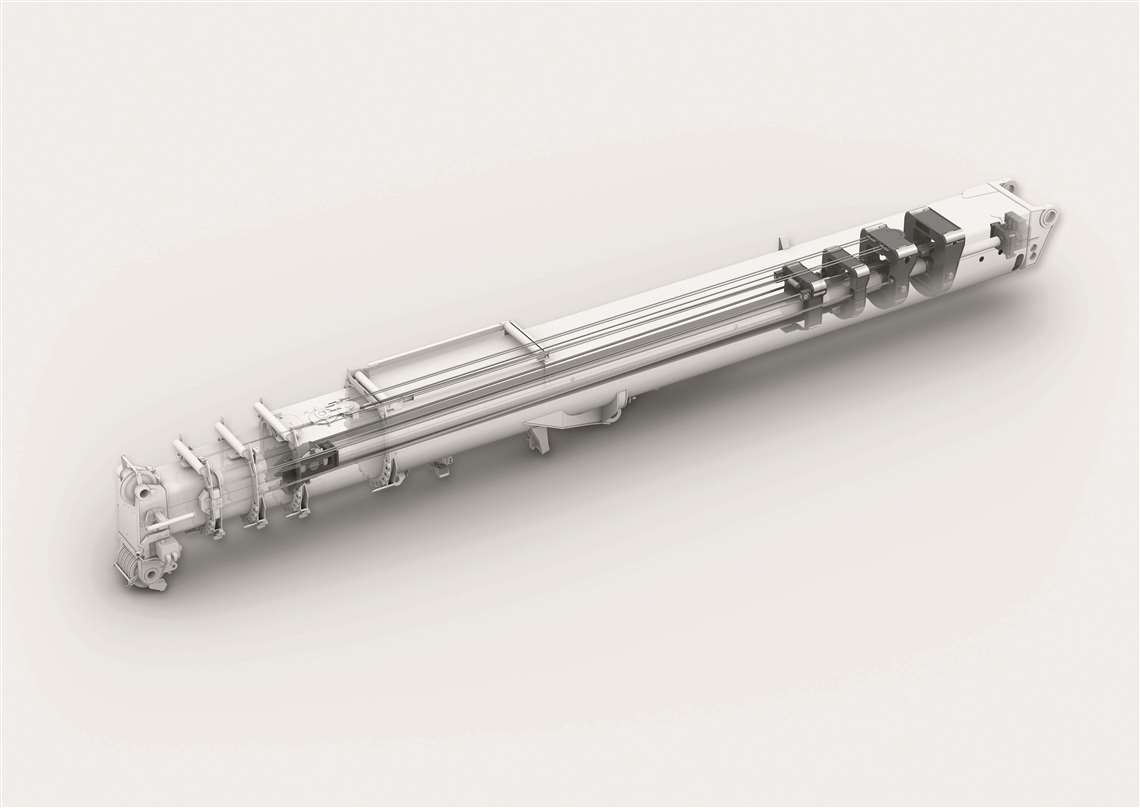 Liebherr’s rope-based telescopic boom Telematik alternative
Liebherr’s rope-based telescopic boom Telematik alternative
Crane maker Liebherr has developed a rope-based telescopic boom as an alternative to its Telematik hydraulic cylinder and pin system for the LTC 1050-3. 1 compact mobile crane. The first machines with the new telescopic boom will be delivered in the second half of 2021.
The rope-based system provides faster telescoping, says Liebherr, and it believes many mobile crane operators in the lifting capacity class up to 50 tonnes are already familiar with rope pull technology. The rope-based boom comprises a pivot section and four telescoping sections – one less than the Telematik boom. It has a full length of 31 metres compared to the Telematik’s 36 metre telescopic boom. It is aimed at indoor applications, however, where the full length of the boom is not necessary and operators will benefit from being able to easily reset the boom to the exact length they require.
STAY CONNECTED


Receive the information you need when you need it through our world-leading magazines, newsletters and daily briefings.



